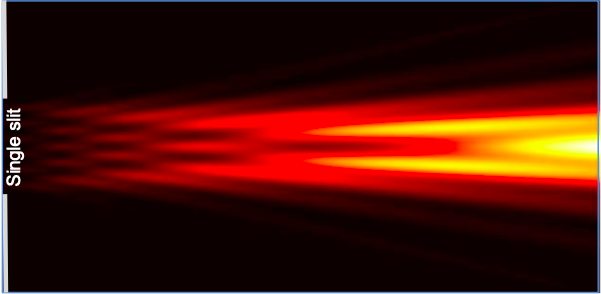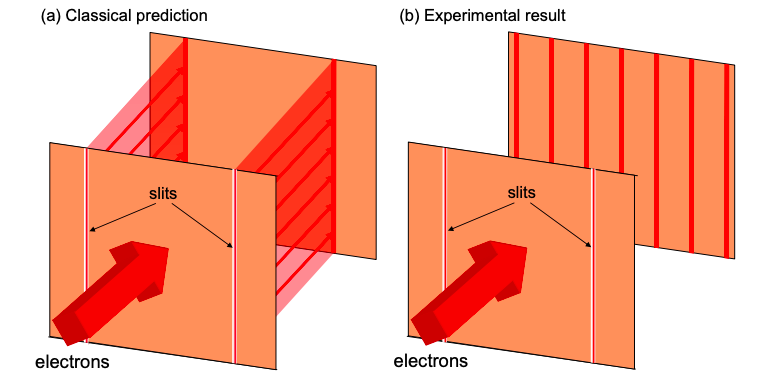1.2: Waves in electronics
- Page ID
- 49299
Consider a beam of electrons propagating through a small hole - a very crude model for electrons moving from a contact into a nanoscale conductor. We might expect that the electrons would continue in straight lines after passing through the hole. But if the hole is small enough (the dimensions of a nanoscale transistor, for example), then the electrons are observed to diffract. This clearly demonstrates that we must consider the wave properties of electrons in nanoelectronic devices.

The diffraction pattern shown above is obtained by assuming each point inside the single slit is a source of expanding waves; see Problem 1.31.1. An easier example to analyze is the double slit experiment, in which we assume there are only two sources of expanding waves. Like the single slit example, the result of a double slit experiment is consistent with electrons behaving like waves.



